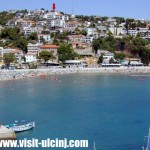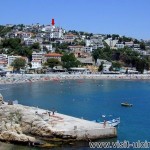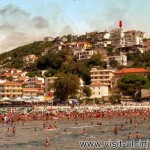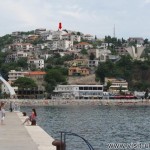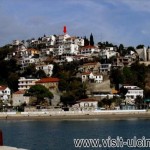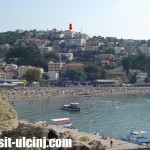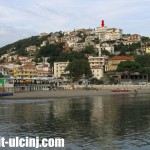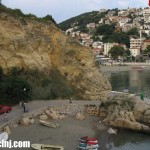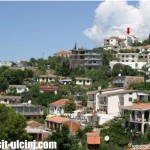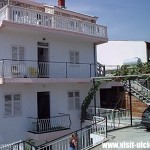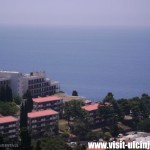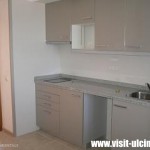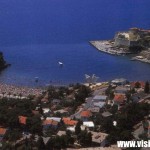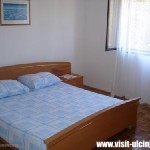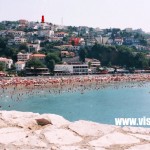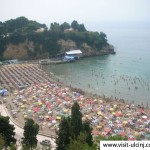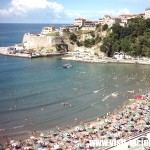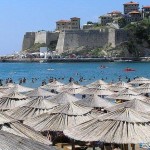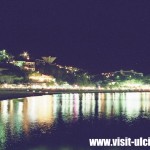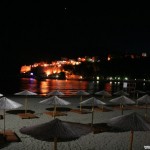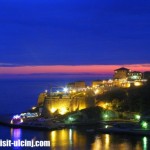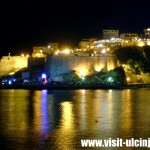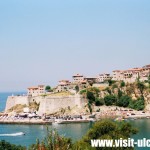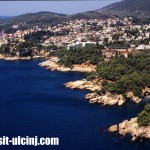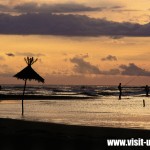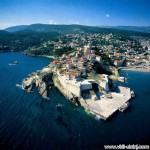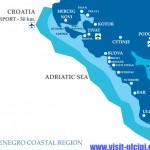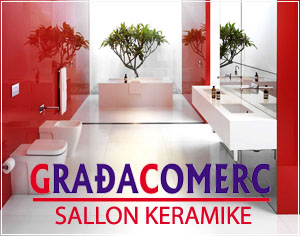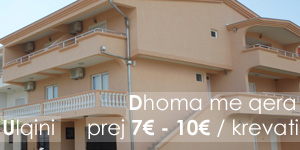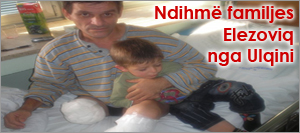All Holiday in Montenegro Ulcinj,Holiday Romms Cobi
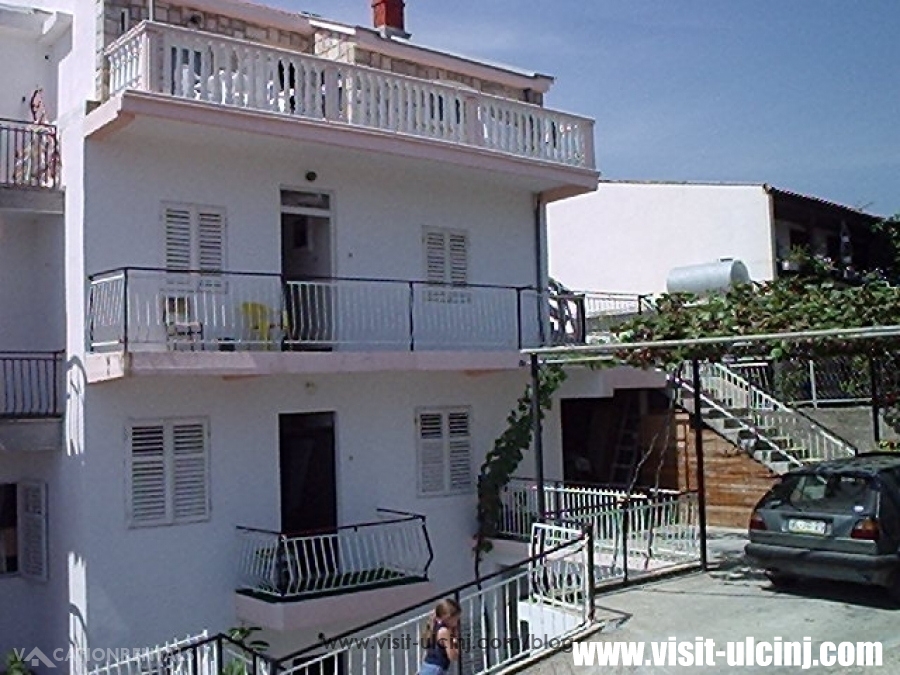 Home: +382 30 423 094
Home: +382 30 423 094
Mobile: +382 69 027 347 + Viber

Holiday Romms Cobi is located in Ulcinj , exactly in the section called Pinjesh. Holiday Romms ?obi is far enough so that you may be in peace there, but at the same time it is close enough to get to the beach or the town centre in three minutes by car.
Holiday Romms ?obi is located 300 meters from the seacoast, 200 meters from the monument and 30 meters from the minimarket.
It is 1 km far from the bus stacion and 80 km from the airport of Podgorica.
A new modern house and the hospitable owners are a good guarantee for you to have a relaxing vacation and not a stressful one, filled with different everyday problems during that time.
The Holiday Romms ?obi is located in the vicinity of the hotels „Galeb“ and „Mediteran“, and it has got a beautiful view over the Old Town, the Small Beach and the pine wood.
It is only 5 minutes walk to the closest beaches like “Galeb” beach, “Jadran” beach or the beaches in the pine wood, and 10 minutes walk to the “Ladies’ Beach” or the Small Beach.
The green market is at 20 minutes’ walk distance, and banks or post offices at 10 minutes’ walk distance.
All the guests of our house can use the parking space in front of the house as well as the terraces on two levels.
The hosts speak Albanian,Montenegrin, German and a little English too. Possibility to organize excursions.
A discount is EXCLUSIVELY available during June and September.
Link: www.visit-ulcinj.com/
[flv width=”490″ height=”400″]http://video.zoover.nl/media/play/2010/01/20100125130811_025.flv[/flv]
Welcome to Ulqin-Ulcinj / Montenegro
Ulcinj is one of the oldest towns at the Montenegrin coast.
The old town is the southest city in Montenegro. Ulcinj center (Stari Grad) is surrounded with old walls and towers and it´s like an old castle over looking the sea. You will find in the old city local shops, cafés, restaurants and galleries in small romantic streets.
Arround the center of the old town Ulcinj was developed in the bay of the ” Little Beach “. With its natural charms, Ulcinj is perfect for tourism.
Ulcinj is considered to be a much warmer place compared to other towns on the Montenegrin coast. With 270 sunny days per year Ulcinj is one of Montenegro´s travel hot spots during the summer, autumn and spring season and is the centre of Ulcinj municipality of Montenegro with a total population of 27,000.
Ulcinj is a typical Mediterranean travel destination with old narrow streets, romantic bars and restaurants, small shops, antique monuments, churches, mosques and picturesque buildings
Climate and Vegetation
Ulcinj is like a sun resort. It is rich with subtropical Mediterranean and decorating plants like old olive trees, palm trees, agaves, cypresses, and mimosas.
During the winter the temperature at Ulcinjska Rivijera (Ulcinj Riviera) is mostly between 8 – 15 C and during summer between 25 – 34 Celsius.
The climate along Ulcinj is a typical Mediterranean one, with mild, rainy winters and hot and dry summers. Summer temperatures in July can rise up to 34°C to 36°C. 2700 hours of sunshine a year.
Flora and fauna in Ulcinj are similar to all other coastal towns in Montenegro. In Ulcinj there are thousands of olive trees along the beaches, palm trees, oleanders, mimosas and wild and domestic pomegranates, figgs, oranges, mandarins, grapes and lemon trees. Rare examples of flowers and decorative trees are cultivated there.
Ulcinj contains a large number of sandy and rocky beaches, offering their visitors privacy and pleasure. Talking about pleasure it is worth of mentioning “The Olive Love Tree”, growing in Ulcinj in over 80.000 trees. Huge insolation, summer temperature of 25 degrees in average, nice sand rich with minerals sumpor waters are making a great potential for health tourism.
Ada Bojana
Some kilometers south from Ulcinj is a 13 kilometers long sandy beach which streaches till the mouth of the river Bojana , from where it continues 2.7 kilometers on Ada Bojana till the Montenegro-Albanian border.
Ada Bojana is popular among foreign tourists from Western Europe for its peace and unique atmosphere.
Ada Bojana, the splendid river island is dividing the delta of the ending river Buna into two forks and has a form of a triangular shape, and is also called triangle island. This beach exclusively reserved for nudists – also the biggest nddist colony in Montenegro.
It is close to 3.0 km long in the direction of the water flow, 1.8 km wide, and 3.4 m high. Two of the sides are washed by the fresh water of the river, and the third part of the triangle is a sandy beach and kisses the adriatic sea.
The right fork of Buna is bridged, connecting Ada with Great Beach. On the banks of this part of the river Buna were built wooden huts with strange fishing divaces-Kalimera, which make it look like an exotic area of the far east Ada, far away from the world, is a real oasis of peace and relaxation. Its absolute silence is distributed only by the chipping of rare birds and the breaking of waves. Its thick and lush vegetation makes it a special micro ecological world, the home of rare plants and rare animals.
The most beautiful restaurants are on the banks of the river.
Pirates, Sailors and Traders
Ulcinj is also well known for his famous sailors. During the last centuries the most developed industry in Ulqini was trade and maritime affairs. Sailors used to import different products from overseas which they would exchange for the goods they were in need of. Ulqini has a long and rich maritime and merchant tradition.
The peak of seafaring was in 17th 18th and 19th centuries. Ulqini’s own merchant marine traded between the large ports and trading centers of the Adriatic, Levant and Mediterranean. They exchanged and shipped to Venice, Istria and Trieste, wool to Genoa, tobacco into many Adriatic ports. Ulcinj geographical location is between:
* Longitudes 19’8 and 19’23 east, and
* Latitudes 41’50 and 42’5 north.
Ulcinj has been for many centuries a pirate nest. In Mala Plaza bay very close to Ulcinj, the pirates in 17th an and 18th century celebrated their victories, preparing halvah stirring it with oars, dividing their loot.
Miguel de Cervantes supposedly was held captive for five years. Legend says that he fellt in love with a woman who was the inspiration for Don Quixote’s lady love, Dulcinea.
One square in Ulcinj down town is called the “Slave Square” because the pirates from Ulcinj were trading in the 17th and 18th century black slaves from different African countries
The beaches:
Ulcinj is famous for its sandy beaches like:
Velika Plaža (”Long Beach”), which is a 13 km long and the longest sand beach on the Adriatic coast. The beach is covered with fine sand which contains large quantities of iodine and salt minerals and is known to have healing effects for curing rheumatism and skin diseases.
Velika Plaza Beach Montenegro Ulcinj
The beach is located 4.5 km from the old town. It takes almost a 2.5 hour walk to discover the whole beach in one way. So make shure you get a lift back to the city by bus or taxi.
Mala Plaža -Little Beach:
At the very heart of the town the closest beach called ‘little beach’ is a 650m long swathe of sand. The Small Beach and its bay is situated between the points of Punta e Nuradinit (Punta Nuradinit) and Suka (Cap Ratislava).
Valdanos Beach:
This Beach together with its background is a true olive reservation. It is covered with big pebbles as well as the sea bottom and in a mild semicircle it is pulled into the land.
There is a tourist settlement of bungalows surrounded by olive trees, as well as a restaurant in its background.
The beach is 400m long, and on its endings there are cliffs, distributed like vines what is a dream of every fisherman, diver and a researcher of sea depths. The sea is clean, dark green. The inlet winds are convenient for sailing.
History of Ulcinj:
The town is believed to be founded in the 5th century BC by Greek colonists from Colchis. The Colchian colonization is mentioned in the 3rd century BC, in a poem by Apollonius of Rhodos.
The town is to be settled in the 5th century BC by Greek colonists from Colchis. The Colchian colonization is mentioned in the 3rd century BC, in a poem by Apollonius of Rhodos.
The wider area of Ulcinj start to populated in the Bronze Age. Illyrian tombs (tumuli), found in the village of Zogaj, in the vicinity of Ulcinj, are going back to the Bronze Age.
llyrians used to live in the region in that time, and under Greek influence they built incredible huge “Cyclopean Walls”. In Latin language, it was known as Olcinium or Ulcinium. In medieval times a shipwreck of a Saracen sailing boat beached there with African slaves. Some locals from Ulcinj saved the Africans and integrated the slaves into their community.

